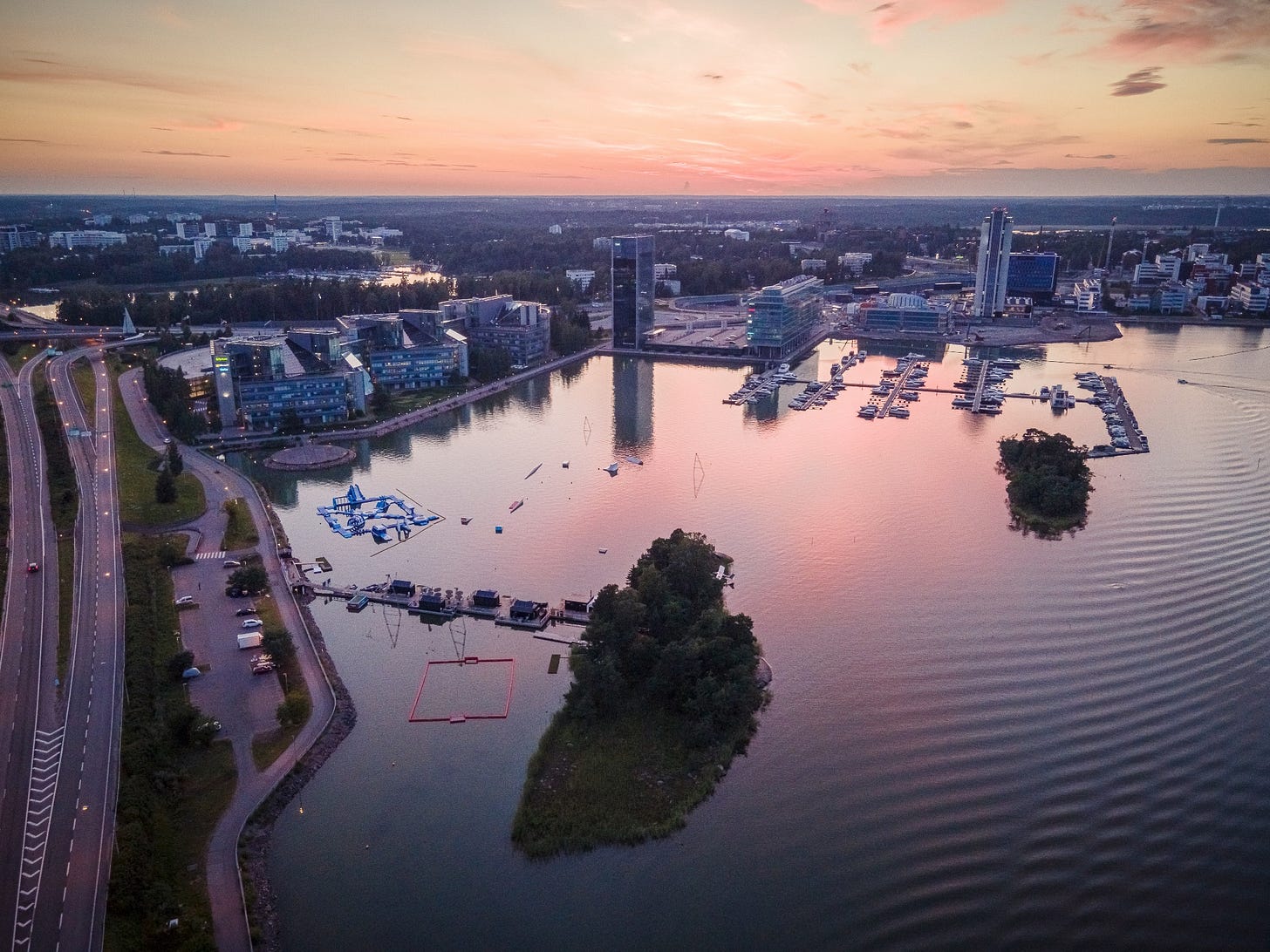Europe's Greenest City?
and what we can learn from it
Espoo, Finland's second-largest city, is a shining example of urban sustainability.
Consistently ranking among Europe's greenest cities, Espoo is actively implementing innovative solutions to solidify its position as a sustainability leader.
Espoo's Sustainability Journey: A Commitment to Progress
Espoo's dedication to sustainability began with a forward-thinking city council. They recognized that a sustainable city equates to a thriving city. Over the years, Espoo has taken significant strides towards a greener future, including:
Investing in Public Transportation: Making it easier for residents to get around without relying on cars.
Introducing City Bikes: Encouraging healthy and eco-friendly commutes.
Protecting Nature: Establishing new conservation areas to preserve natural beauty.
Promoting Sustainable Lifestyles: Educating residents on adopting green practices.
Targeting Carbon Neutrality: Aiming for carbon-neutral district heating by 2025.
This commitment is reflected in the "Sustainable Espoo" program, a comprehensive plan outlining five key goals:
Smart Solutions: Utilizing technology for a more sustainable future.
Streamlined Transportation: Ensuring efficient and eco-friendly mobility options.
Emission-Free Energy: Creating renewable energy sources and smart energy management systems.
Sustainable Living: Empowering residents to embrace sustainable practices.
Environmental Integration: Harmoniously integrating the city with its surrounding environment.
The program fosters public engagement by actively involving stakeholders in project selection and development.
A dedicated project manager facilitates communication and ensures smooth project execution.
Notably, the program emphasizes circular economy principles as a cornerstone of all sustainability solutions.
Kera: A Model Circular Economy District
Espoo's dedication to circularity is evident in the Kera district, a former industrial area undergoing a transformation.
Kera is poised to become a global showcase for circular economy principles, featuring several key projects:
Smart and Clean Kera: This project aims to revitalize the district with repurposed and new circular buildings, creating a vibrant hub for residents (14,000) and businesses (10,000). Notably, over a third of new residents will occupy the former logistics center, demonstrating the project's focus on resource utilization. A physical hub and digital platform will facilitate collaboration, experimentation, and innovation in circular practices. The project receives support from the Finnish Innovation Fund Sitra and the Smart & Clean Foundation of the Helsinki Metropolitan Area.
KIEPPI Project: This initiative focuses on developing sustainable neighborhoods like Kera. KIEPPI fosters the creation of new jobs and businesses based on circularity and the sharing economy. The project promotes industrial symbiosis, where waste from one business becomes a valuable resource for another. KIEPPI involves pilot projects in Espoo and other participating cities, encouraging collaboration between businesses, universities, and municipalities to optimize resource usage. This project is funded by the European Regional Development Fund.
While attracting businesses is crucial for Kera's success, Espoo understands the limitations of direct financial support due to state aid regulations.
The city actively engages with businesses, discussing long-term strategies and aligning initiatives to create a win-win situation.
This fosters an environment conducive to circular economy ventures and collaborations.
Lessons Learned: Key Takeaways for Sustainability Success
Espoo's journey offers valuable insights for other cities aspiring to be sustainable leaders:
Clear Vision and Goals: Having a well-defined sustainability or circular economy program with clear targets is essential to mobilize stakeholders and avoid scattered initiatives.
Dedicated Project Management: Assigning a dedicated project manager from the municipality ensures smooth communication and project tracking.
Creative Financing: Securing funding for circular projects can be challenging. Espoo demonstrates the effectiveness of fostering collaboration among businesses with similar visions to explore joint investments and participation in circular projects.
By following these principles and drawing inspiration from Espoo's innovative approach, other cities can embark on their own journeys towards a more sustainable future.
Thoughts?





